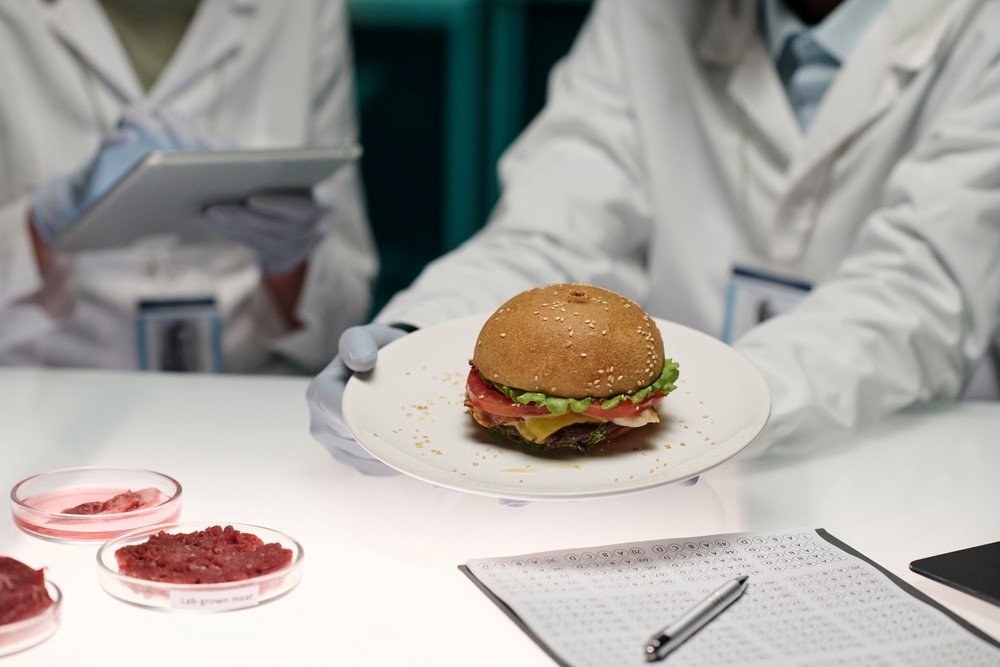Boosting the Flavor and Aroma of Cultured Meat
Scientists have developed a heat sensitive flavor-package that releases a meaty flavor and aroma when cooking cultured meat.
Research published online in Nature Communications in July, 2024

[Researchers enhance the sensory qualities of cultured meat, aiming to replicate traditional meat's flavor and aroma for a sustainable future]
Global meat consumption is steadily increasing, posing significant challenges due to the meat industry's extensive use of natural resources, including agricultural and grazing land, livestock feed, and water. Additionally, the industry is a major contributor to greenhouse gas emissions and environmental pollution. Over the past two decades, concerns have mounted regarding our capacity to sustain the growing demand for meat in the long term. A worldwide reduction in meat consumption is essential to address these issues.
In response to this pressing challenge, researchers have developed a promising solution: cultured or lab-grown meat. Cultured meat is derived from bovine cells grown in a three-dimensional biomaterial scaffold. These cells proliferate within the scaffold, eventually forming a mass of biological tissue that closely resembles conventional meat. Cultured meat has the potential to become a sustainable meat source for future generations, offering a viable alternative to traditional meat production.
Research on cultured meat has concentrated on perfecting cell growth and the appearance of the final product. But would society be more accepting of cultured meat if it smelled and tasted just like traditional meat? To address this question, a team of researchers led by Professor Jinkee Hong from Yonsei University in Seoul, South Korea, focused on enhancing the sensory qualities of cultured meat to satisfy consumers' senses of smell and taste.
They developed switchable flavor compounds that are released in response to heat. Their inspiration came from the Maillard reaction, which is responsible for the flavorful and aromatic qualities of food when cooked. Professor Hong stated, “As chemical engineers, we conducted this research by combining chemical engineering, biotechnology, and food engineering. We believe that our customizable strategy will contribute to the production of high-quality cultured meat that embodies the sensory characteristics of conventional meat.”
The flavor molecules, held in the bio-scaffold by chemical bonds, are released when these bonds become unstable under heat, such as during cooking. In their study, the researchers tested the stability of these flavor compounds during the initial culturing process and later examined their heat-responsive release. The team developed a variety of flavors to cater to diverse consumer preferences.
Professor Hong notes, “We hope this technology to improve the organoleptic properties of laboratory-grown meat will persuade people to be positive about consuming cultured meat, a major step towards sustainable meat production.”
The sensory features of any food significantly contribute to its popularity. Therefore, incorporating the flavor and aroma of traditional meat into cultured meat is likely to sway public preference towards this sustainable option. In conclusion, this research has a profound impact on our future culinary choices and addresses the environmental and ethical concerns associated with the conventional meat industry.
Title of original article: Flavor-Switchable Scaffold for Cultured Meat with Enhanced Aromatic Properties
DOI: 10.1038/s41467-024-49521-5
Journal: Nature Communications
Contact corresponding author: Prof. Jinkee Hong (jkhong.yonsei@gmail.com)
Recommended Articles
Professor Jong-Hyun Ahn
Novel technique for producing high-resolution micro-LED displays
Professor Seong Chan Jun
Professor Donghyun Kim
Array of hope: Up close and personal with mitochondria in neurons